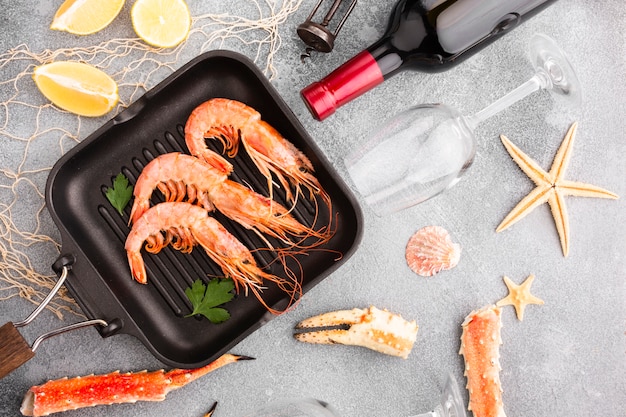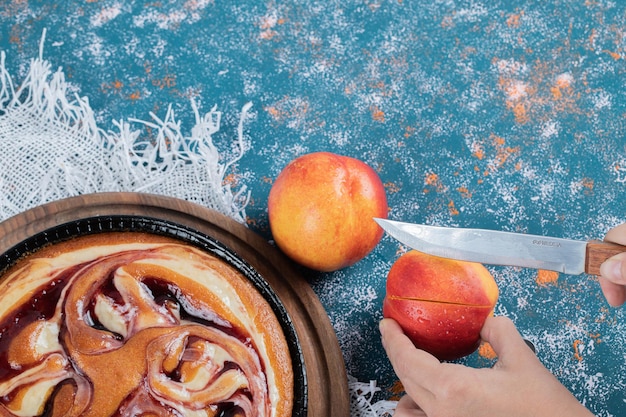Right, let's talk about imitation crab meat. You know, that versatile, budget-friendly ingredient that can bring a burst of seafood flavour to all sorts of dishes? I've been using it for years, and I've learned a thing or two about getting the most out of it. Trust me, there's more to imitation crab than meets the eye. I've definitely had my fair share of "meh" imitation crab dishes, but once you know a few tricks, you'll be amazed at how good it can actually taste. Ready to get your culinary game on? Let's dive in.
(Part 1) The Lowdown on Imitation Crab Meat

First things first, let's clear up any confusion about what we're actually dealing with here. Imitation crab meat, as the name suggests, isn't actually crab meat. It's made from a type of ground fish paste called surimi, typically from white fish like pollock, hake, or Alaska cod. They add flavourings, colourings, and sometimes even a bit of real crab extract to give it that distinctive crab taste. Think of it as a clever imitation, a delicious seafood impersonator.
The History: A culinary journey
The story of imitation crab meat is quite fascinating, really. It all started in Japan back in the 1970s. Fishermen were struggling to sell a particular type of white fish that was quite popular with sushi chefs. Someone, somewhere, had a brilliant idea – why not create a product that mimicked crab meat, using this abundant fish? And just like that, imitation crab meat, or "surimi", was born! It soon became a global sensation, finding its way into all sorts of dishes, from salads to sushi. Who knew a bit of creative ingenuity could revolutionize a whole industry?
Types of Imitation Crab Meat: Choose Your Weapon
There are a few different types of imitation crab meat available, each with its own distinct characteristics. It's good to know your options:
- Flakes: This is the most common type you'll find. They look like little shredded crab meat, perfect for salads, dips, and sandwiches. They're lightweight and versatile, taking on the flavours of your dish beautifully.
- Sticks: These are often used in sushi and are also great for making appetizers. They have a bit more texture than flakes, adding a satisfying chewiness to your bites.
- Chunks: These come in larger pieces, ideal for stir-fries and other dishes where you want a more substantial crab flavour. They hold their shape well, adding a nice visual appeal to your creations.
Choosing the Right Imitation Crab Meat: A Quality Check
When choosing imitation crab meat, it's worth paying attention to the quality. Look for brands with high-quality ingredients, you can often tell by the colour and the smell. Go for a nice, creamy white colour, and avoid any that have a strong, fishy odour. If it smells like anything other than a subtle, fresh ocean scent, it's probably best to steer clear. Trust your nose! And, if you can, read the ingredient list, opting for brands that don't have too many added chemicals or preservatives.
(Part 2) Cooking with Imitation Crab Meat: A culinary adventure

Now, let's get into the fun part – the cooking! Imitation crab meat is incredibly easy to work with. It's like a blank canvas, ready to absorb flavours from whatever you pair it with. It's a real chameleon in the kitchen!
Prepping Your Crab Meat: A Little TLC
Before you start cooking, give your imitation crab meat a quick rinse under cold water. This will help to remove any excess salt or flavouring, ensuring a clean and fresh taste. Then, gently pat it dry with paper towels. This helps prevent it from becoming soggy when you're cooking it. A little extra care goes a long way!
Boosting Flavour and Texture: A Few Simple Techniques
I've found that a little bit of extra care can make a big difference in the flavour and texture of your dishes. If you're using flakes, try gently separating them with your fingers. It gives them a more delicate texture and helps them absorb flavours better. And if you’re using sticks or chunks, try breaking them into smaller pieces before cooking. This creates a more even distribution of flavour and texture throughout your dish. Remember, a little attention to detail goes a long way in cooking.
(Part 3) Easy Imitation Crab Meat Recipes: A Culinary Journey Begins

Alright, let's get into some recipe ideas! Don't worry, I've got you covered with both simple and more elaborate options. We'll start with some classics and then move on to some more adventurous recipes.
1. The Classic Crab Salad: A Timeless Favourite
This is a real crowd-pleaser, super simple to whip up, and always a hit. You'll need:
- 1 packet of imitation crab meat, flaked
- Mayonnaise (to taste) – I like to start with a tablespoon or two and add more as needed, based on your preference.
- Chopped celery or onion – this adds a nice crunch and flavour contrast.
- Salt and pepper to taste – don't be shy with the seasoning, it really brings out the flavour.
Mix everything together in a bowl and chill for a little bit before serving. You can serve it on crackers, bread, or even as a topping for salads. It's so versatile!
2. Stir-Fry Delight: A Symphony of Flavours
This is a great way to add some seafood flavour to your stir-fries. The imitation crab meat cooks quickly, so it's perfect for a fast and flavourful meal. You'll need:
- 1 packet of imitation crab meat, chopped
- Your favourite stir-fry vegetables (broccoli, peppers, carrots, etc.) – use whatever you have on hand, or get creative with a mix of colours and textures.
- Soy sauce – a good quality soy sauce will make a big difference.
- Ginger and garlic – these add a punch of flavour.
- Sesame oil – the nutty aroma of sesame oil adds a wonderful touch.
Heat the sesame oil in a wok or large frying pan. Add the chopped crab meat and stir-fry for a few minutes until it's heated through. Add the vegetables and cook until they are tender-crisp. Add the soy sauce, ginger, and garlic, and stir-fry for another minute. Serve over rice or noodles. So simple, yet so delicious!
3. Sushi Rolls Simplified: A Culinary Adventure
Now, I know what you’re thinking – making sushi at home seems complicated. But trust me, it’s easier than you think, and the result is absolutely delicious. You can make your own nori seaweed wraps or use pre-made ones. Simply fill the wrappers with rice, add your imitation crab meat, cucumber, avocado, or any other fillings you like. Then, roll up tightly. There are tons of videos online that show you exactly how to do it. You’ll be amazed at how easy it is to create beautiful and tasty sushi rolls at home.
4. Crab Rangoons: A Classic Appetizer
These little bites are a classic appetizer, and they’re surprisingly easy to make. You can buy pre-made wonton wrappers or make your own. Simply mix the imitation crab meat with cream cheese, green onions, and a bit of soy sauce. Place a spoonful of the mixture into each wonton wrapper, fold and seal them, and then deep-fry until golden brown. Serve with a sweet and sour dipping sauce. These are a real crowd-pleaser – always a hit at parties!
5. Crab Cakes: A Bit More Effort, But Worth It
This is a bit more involved, but totally worth the effort. The key to great crab cakes is using the right amount of breadcrumbs. It should be just enough to hold the cakes together without making them heavy. You'll need:
- 1 packet of imitation crab meat
- 1 egg, beaten
- Chopped onion – for a bit of sweetness and flavour
- Mayonnaise – a touch of richness and creaminess
- Breadcrumbs – just enough to bind the cakes together
- Salt and pepper – season generously to taste
Combine all the ingredients in a bowl and mix well. Form into patties and pan-fry until golden brown. Serve with a lemon wedge and a side of tartar sauce. These are a delicious and satisfying meal, perfect for a special occasion.
(Part 4) Cooking Tips from a Crab-Loving Chef: Master the Art
Alright, let's talk about some practical tips that will elevate your imitation crab meat game to the next level. These are tricks I've learned over the years, so they're tried and true!
1. Don't Overcook It: A Gentle Touch
Imitation crab meat can become dry and rubbery if it's overcooked. Think of it as "heating through" rather than "cooking" – you just want to warm it up and let those flavours develop. It's best to cook it quickly over medium heat, and just a few minutes should be enough. Remember, less is more when it comes to imitation crab meat.
2. Flavour Boosters: A Little Spice, A Lot of Delight
Don't be afraid to get creative with your flavours! A squeeze of lemon juice or a splash of white wine adds a bright and refreshing touch to your dishes. A dash of cayenne pepper can add a little kick, too. Don't be afraid to experiment! A little goes a long way, though, so start with small amounts and adjust to taste. You might discover your new favourite flavour combination.
3. The Right Texture: A Symphony of Crunch
Imitation crab meat can be a bit mushy, so I like to add a little crunch to my dishes. I'll chop up some celery, cucumber, or even some toasted sesame seeds. You could even throw in some chopped nuts for a bit of added texture and flavour. The contrast between the soft crab meat and the crunchy additions creates a really satisfying dining experience.
4. Storage is Key: Preserving Freshness
Imitation crab meat can be stored in the refrigerator for a few days. To keep it fresh, I like to wrap it in plastic wrap or store it in an airtight container. Avoid freezing it, as it can become dry and crumbly. If you do need to freeze it, make sure it's tightly wrapped and use it within a few months. But, ideally, use it fresh for the best results.
(Part 5) Beyond the Usual: Creative Culinary Adventures
Now, let's move beyond the typical ways of using imitation crab meat. Here are some creative ways to incorporate it into dishes you might not expect. Get ready to be surprised!
1. Pasta Perfection: A Seafood Twist
Toss some chopped imitation crab meat into your favourite pasta dish for a quick and easy seafood boost. It works particularly well with alfredo sauce, but you can use any sauce you like. For an extra burst of flavour, add a bit of chopped fresh basil or parsley. The combination of creamy pasta and sweet, delicate crab meat is truly divine.
2. Pizza Power: A Seafood Delight on a Crust
Who needs pepperoni when you can have delicious crab meat on your pizza? Top your favourite pizza crust with a layer of tomato sauce, mozzarella cheese, and some shredded imitation crab meat. Bake in the oven until the cheese is melted and bubbly. This is a fun and flavourful twist on the classic pizza, perfect for a casual meal or a party.
3. Soup Sensation: A Warm Embrace of Flavour
Add some chopped imitation crab meat to your favourite soup for a satisfying meal. It's particularly good in seafood chowder or creamy tomato soup. The crab meat adds a delicious touch of seafood flavour and a bit of texture to the soup. It’s a great way to make a simple soup feel more special.
(Part 6) Imitation Crab Meat and Your Diet: A Balanced Approach
Now, let's talk about the nutritional side of things. Imitation crab meat is a good source of protein and contains a decent amount of vitamin B12. However, it's also high in sodium, which is something to be mindful of. And, since it's made from processed fish, it's not as healthy as fresh crab meat. That said, it can still be a delicious and convenient addition to your diet if you enjoy it in moderation. Remember, balance is key!
(Part 7) The Ethical Debate: A Look at Sustainability
There's been a bit of a debate about the sustainability of imitation crab meat. Some people argue that it's better for the environment than real crab meat, as it doesn’t involve catching wild crabs. However, there are concerns about the impact of catching the white fish used to make it, particularly on certain species that are overfished.
As a responsible consumer, it's good to be aware of these issues. If you're concerned about the sustainability of imitation crab meat, try to choose brands that use sustainable fishing practices. You can often find information about their sourcing on the product packaging or on their website. It's important to make informed choices that align with your values.
(Part 8) FAQs: Your Questions Answered
Here are some frequently asked questions about imitation crab meat:
1. What does imitation crab meat taste like?
Imitation crab meat has a slightly sweet and salty taste, with a hint of crab flavour. It's not as delicate as real crab meat, but it's still delicious and can be quite versatile. It’s got that satisfying “ocean” taste that everyone seems to love.
2. Is imitation crab meat safe to eat?
Yes, imitation crab meat is safe to eat as long as it's handled and cooked properly. Always check the expiration date and make sure it's stored correctly. As with any food, it's best to be mindful of potential allergens or sensitivities.
3. Is imitation crab meat good for you?
Imitation crab meat can be a good source of protein and vitamin B12, but it's also high in sodium. It’s best enjoyed in moderation as part of a balanced diet. Just like with any processed food, it's a good idea to enjoy it occasionally rather than as a staple.
4. What are the best ways to use imitation crab meat?
You can use imitation crab meat in a variety of dishes, from salads and dips to stir-fries and sushi. It’s also great for sandwiches, wraps, and appetizers. Be creative and try different things! You might just discover your new favourite way to use it. The possibilities are endless!
5. Can I freeze imitation crab meat?
While you can freeze imitation crab meat, it's not recommended. Freezing can change the texture and make it dry and crumbly. It's best to use it fresh or within a few days of buying it. If you do need to freeze it, make sure it's tightly wrapped and use it within a few months. But, ideally, use it fresh for the best results.
(Part 9) Final Thoughts: Embrace the Delicious Possibilities
So, there you have it! I hope this guide has inspired you to give imitation crab meat another try. With a few simple tips and recipes, it can be a delicious and versatile ingredient to add to your repertoire. Remember, don't be afraid to get creative and experiment in the kitchen. Have fun with it, and enjoy your culinary journey!
Everyone is watching

How to Cook Frozen Lobster Tails Perfectly: A Step-by-Step Guide
RecipesLobster. Just the word conjures up images of lavish meals, special occasions, and a taste of luxury. But let's...

Pigs in a Blanket Cooking Time: How Long to Bake for Perfect Results
RecipesAh, pigs in a blanket. Just the name conjures up images of those delightful little parcels of crispy pastry en...

Pork Fillet Cooking Time: How Long to Cook It Perfectly
RecipesPork fillet, or tenderloin as it's sometimes called, is a real favourite in our house. It's so versatile, and...

The Ultimate Guide to Tender, Juicy Pulled Pork
RecipesRight, let's talk pulled pork. It's one of those dishes that just screams "comfort food," doesn't it? I mean...

The Ultimate Guide to Cooking Delicious Frankfurters
RecipesLet's face it, we all love a good frankfurter. It's a classic, simple, and always satisfying. But let's be rea...
